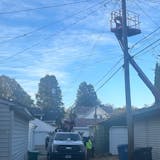Javier Martinez is an important part of the fastest-growing component of the Twin Cities labor force and a critical element in our economic future.
Martinez, 26, an immigrant from Mexico as a child, worked as a paper carrier and cleaned houses after graduating from St. Paul Johnson High School.
"I also was pretty good with computers," Martinez said. "I could fix my personal computer. And I enjoyed troubleshooting and helping friends."
Today, Martinez is a certified IT professional at a northeast Minneapolis small business, Our Family Wizard.
Martinez has doubled his income to more than $45,000, plus receives good benefits and a career pathway.
He and his wife own a house in St. Paul and are raising two children.
"I like a lot of things about my career," Martinez said. "Great people at the office. I like to help customers. I also manage equipment and help manage our [IT] system."
Martinez graduated in 2014 from the IT-Ready training program of CompTIA, the computer industry's training program that targets nontraditional IT trainees who have demonstrated aptitude and interest but lack formal computer science backgrounds.


